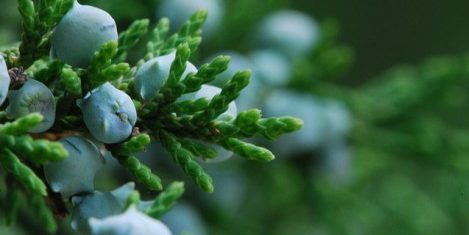THE LEAFLET

Tree of the Month: Red Cedar
The Eastern red cedar (Juniperus virginiana L.) has a long, rich history through the beginnings of our country, and it owes that distinction in part to president & general George Washington. He was known for his love of arboriculture and the tenderness with which he kept his Mount Vernon home. One story even states that as the British were bearing down for an impending battle, Washington rallied his men and then wrote a long letter to his estate manager, planning out the plantings of dogwoods and red cedars for his beloved home.
These stately trees are expansive – first seen on Roanoke Island, Virginia, they’re native in 37 states, ranging down eastern United States from from Ontario to northwestern Florida and as far west as North Dakota and Texas.
Eastern red cedars are incredibly hardy – resistant to the harsh conditions of cold, heat, and drought, they thrive in a variety of environments: from dry highlands to flood plains and swamps. Because of their sturdy nature, they can often be found in abandoned fields or along fence lines.
Other notable features include the Eastern red cedar’s aromatic nature – the wood’s strong fragrance actually deters moths, and is thus the reason it was often used to line “cedar chests.” The wood is reddish-brown, with a fibrous form, and though the tree is known for it’s recognizably narrow and compact crown, the trunk is often angled and can take on unique shapes. The tree’s cones are used as a flavoring for gin, and are eaten by a variety of wildlife, including some that were named for it (“cedar waxwing”). The tree itself also serves as a larval host plant for a specific butterfly species (named for the tree’s species, juniperus), the juniper hairstreak butterfly.
Juniperus virginiana is also at the center of a story originating here in the District. Cedar Hill, the name of Frederick Douglass’ home atop an area in the Anacostia neighborhood, was named because of the incredible red cedars that surrounded the site. Though the original cedars are no longer there, through an act of Congress in 1962 the site is now under the care of the National Park Service and is considered a national historic site – and has now new red cedars to help keep alive the name.
Those aren’t the only places you can see Eastern red cedars in the Washington, D.C. area – they can be found in area cemeteries and along private drives, but more notably at the Franciscan Monastery and the Hillwood Estate. For other locations around the city, be sure to check out our interactive tree map:
Photo credit: wackybadger.